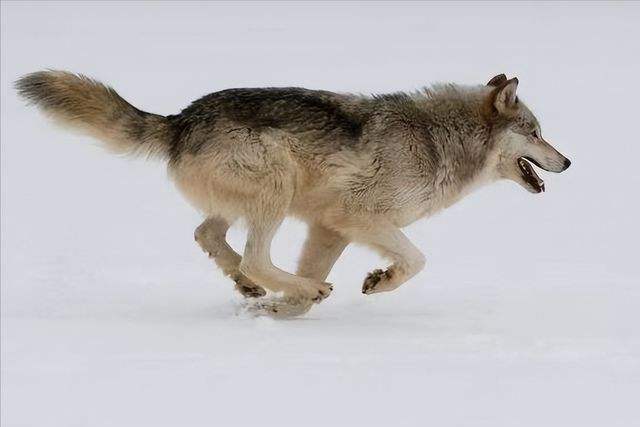Gray Wolf
IUCN
LCBasic Information
Feature
People usually call it "wolf".
Distribution and Habitat
Origin: Afghanistan, Albania, Armenia, Austria, Azerbaijan, Belarus, Belgium, Bhutan, Bosnia and Herzegovina, Bulgaria, Canada, China, Croatia, Czech Republic, Denmark, Estonia, Finland, France, Georgia, Germany, Greece, Greenland, Hungary, India, Islamic Republic of Iran, Iraq, Israel, Italy, Jordan, Kazakhstan, South Korea, Democratic People's Republic of Korea, Kyrgyzstan, Latvia, Libya, Lithuania, Luxembourg, Mexico, Moldova, Mongolia, Montenegro, Myanmar, Nepal, Netherlands, North Macedonia, Norway, Oman, Pakistan, Poland, Portugal, Romania, Russian Federation, Saudi Arabia, Serbia, Slovakia, Slovenia, Spain, Sweden, Switzerland, Syrian Arab Republic, Tajikistan, Turkey, Turkmenistan, Ukraine, United Arab Emirates, United States, Uzbekistan and Yemen.
Extinct: Ireland, Japan and United Kingdom.
Possibly extinct: Bangladesh.
The gray wolf has a wide range of habitats, including Arctic tundra, open woodlands, grasslands, deserts, arid areas, hills, mountains, forests a
Appearance
The ears of the gray wolf are vertically erected and parallel to each other. The tail hangs down between the hind legs. The wolf's muzzle is longer and more pointed than that of a dog. The mouth is also wider, with large incisors and very sharp teeth. The eyes are tilted upwards and are located higher than the bridge of the nose. The chest is wider than that of a dog, the limbs are long and strong, and there are swollen pads on the soles of the feet. The forelimbs have 5 fingers and the hind limbs have 4 toes. The fingers and toes have short claws at the ends. The footprints are round or oblong, and the pattern is like a plum blossom. The tail is shorter and thicker than that of a dog, and the hair is more fluffy.
Gray wolves have a dense fur layer, which provides them with excellent insulation and can resist cold. The color of the gray wolf's fur varies according to geographical distribution, ranging from pure white in Arctic populations to a mixture of white and gray, br
Details
Grey wolf, Arctic wolf, etc., is usually referred to as "wolf" in human society. There are 38 subspecies and 1 domesticated species (domestic dog).

The size of the gray wolf mainly depends on the geographical location, and there are great differences in the distribution area. The higher the latitude of distribution, the larger the size of gray wolves. The southern population is usually smaller than the northern population. Female wolves are 20% smaller than male wolves on average. The largest wolves are distributed in the Midwest of Canada, Alaska and throughout North Asia, and the smallest tend to be distributed in the southernmost part (Middle East, Arabia and India).
The gray wolf population is usually composed of 5-10 people. In this small group, there is a leading male wolf. All male wolves are often divided into A, B, and C levels in turn, and the same is true for female wolves. There is always a dominant wolf in the wolf pack. The others, whether male or female, are sub-dominant and lower-level peripheral male and female wolves. In addition, there are young wolves. The dominant male wolf is the center of the group and the main force guarding the living area. The dominant female wolf has authority over all females and most males, and it can control all female wolves in the group. The dominant male and female wolves, as well as the sub-dominant male and female wolves, form the center of the group. The rest of the wolves, whether female or male, remain in the core. The dominant male wolf is actually a typical dictator. Once the prey is caught, it must eat it first, and then arrange it in order according to the social hierarchy. And it can enjoy all the female wolves; the dominant female wolf will also prevent the dominant male wolf from mating with other female wolves. In this way, mating and reproduction of offspring are generally carried out between the two strongest individuals of the dominant male and female wolves.
The gray wolf has been reduced by about one-third of its original global range, mainly in developed areas, Europe, Asia, Mexico and the United States. Because the gray wolf threatens livestock, it is deliberately poisoned and shot by humans. The gray wolf continues to compete with humans for living space, and human expansion and encroachment on natural habitats also affect the number of wolves. Especially in developing countries, exaggerated public portrayal of the threat and danger of wolves, as well as habitat fragmentation, have caused the gray wolf's survival area to become too small; in Canada, Alaska, and the former Soviet Union and Mongolia, humans have long continued to use the species' fur; these are all reasons for the decline of the gray wolf population. In addition to environmental factors, there are also many reasons why humans shoot wolves whenever they see them, for their fur, to protect their livestock, or even just for hunting and leisure.
Even if there is no danger of extinction, regional gray wolf populations are still threatened. One threat is the genetic bottleneck caused by population separation. Too few distributions have caused the isolation of small animal populations, which has led to inbreeding and population degradation.
Since 1970, countries have introduced laws to protect them, land use changes, population shifts from rural to urban areas, the number of gray wolves arrested has decreased, Western Europe and the United States have carried out artificial breeding and release into the wild, and re-wilding in parts of the western United States.
Listed in Appendix I, II and III of the Convention on International Trade in Endangered Species of Wild Fauna and Flora (CITES) 2019 Edition Appendix II.
Listed in the IUCN Red List of Threatened Species (IUCN) 2018 ver 3.1-Least Concern (LC).
Listed in China's "National Key Protected Wildlife List" (February 5, 2021) Level 2.
Protect wildlife and eliminate game.
Maintaining ecological balance is everyone's responsibility!








